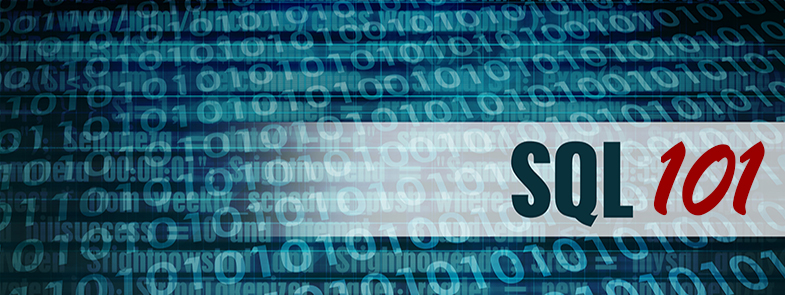Today’s TechTip is a two-for-one. I’ll talk about SQL’s OVRDBF replacement, ALIAS, and a simple yet dangerous SQL statement, DROP. Keep reading to find out more.
Let’s start with ALIAS. In a nutshell, we can say that ALIAS is Override Database File (OVRDBF) made simple, practical, and permanent.
If you ever used the OVRDBF CL command, then the functionality provided by ALIAS should be easy to grasp; it’s exactly the same! If you never used OVRDBF, it’s a way to use an alternate name for a file or, most importantly, a member of a file. This is especially important because you can’t specify a file member in SQL. The file member concept is an IBM i peculiarity, and SQL has no idea how to handle it. Fortunately, the CREATE ALIAS SQL instruction allows you to create a name for a given member of a file.
Its syntax is quite simple:
CREATE ALIAS <schema/library name>.<alias name>
FOR <schema/library name>.<file name>(<member name>)
Note that you can create an alias for a file member in a separate library—or schema—of the original file location. In my opinion, this might create some confusion, so I prefer to avoid it whenever possible.
Suppose, for example, that I want to query a physical file named Inv_Log, which keeps monthly logs of my inventory positions, a kind of monthly snapshot of the stock. The problem is that each “snapshot” is saved in a separate member within the file, following an L_<year>_<month> pattern name. For instance, the member for January 2021 is called L_2021_01. If I want to query this particular member, I need to create an alias first:
CREATE ALIAS MYSCHEMA.INV_LOG_2021_01 FOR MYSCHEMA.INV_LOG (L_2021_01)
After issuing this statement, I can treat INV_LOG_2015_01 as a regular table or view, mentioning it in DML statements, thus allowing me to query a file member directly. Naturally, you can also use CREATE ALIAS to shorten (or lengthen) the name of a table or view. The only difference in the command to issue is the final part—the “(<member name>)”—which is not applicable. For instance, if you want to create an alias for the MYSCHEMA.PF12345 file that clarifies what it stores (let’s say it’s configuration data), you can simply issue the following command:
CREATE ALIAS MYSCHEMA.TABLE_CFGDATA FOR MYSCHEMA.PF12345
Note that, unlike OVRDBF, aliases are permanent. If you want to get rid of them, you’ll need to issue a DROP ALIAS statement, which is part of the family of commands I’ll talk about next.
SQL’s Way to Delete Things: Drop Them
DROP is actually a set (or family) of commands, just like the CREATE commands I talked about a few TechTips ago. For each CREATE <something> command, there’s a DROP <something> counterpart. That’s how you remove or delete SQL “things.” You probably noticed that the DELETE SQL statement is nothing like the CL DLT* commands, right? You also might have noticed that the way to remove a constraint from a table involves the word “drop.” In SQL, DROP is used to remove or delete stuff: DROP ALIAS, DROP INDEX, DROP VIEW, DROP TABLE, and DROP SCHEMA do exactly what they appear to do—delete stuff. Their syntax is also pretty straightforward. Here’s how to remove the alias created earlier in this article:
DROP ALIAS MYSCHEMA.INV_LOG_2021_01
Note that some DROP statements might not work due to referential constraints (such as table dependencies) or other details (a table is in use or was not found, for example). In general, however, think twice before issuing a DROP statement. If the idea is recreating a SQL “thing,” check whether you can use an ALTER statement instead. Note that even though an ALTER VIEW statement doesn’t exist, you can issue a CREATE OR REPLACE VIEW, which in practice does the respective DROP/CREATE operations for you, if the view already exists.
If you really mean to remove permanently, consider the side effects that the operation might have. For instance, dropping an index (explained in the previous TechTip) can have unexpected impacts on performance because a view or an embedded SQL statement might be implicitly using it.
That’s all I have for now! Next time around, I’ll introduce you to your new best friend: the SQL trigger. Until then, feel free to comment, correct, or share your experience in the Comments section below.



























 More than ever, there is a demand for IT to deliver innovation. Your IBM i has been an essential part of your business operations for years. However, your organization may struggle to maintain the current system and implement new projects. The thousands of customers we've worked with and surveyed state that expectations regarding the digital footprint and vision of the company are not aligned with the current IT environment.
More than ever, there is a demand for IT to deliver innovation. Your IBM i has been an essential part of your business operations for years. However, your organization may struggle to maintain the current system and implement new projects. The thousands of customers we've worked with and surveyed state that expectations regarding the digital footprint and vision of the company are not aligned with the current IT environment. TRY the one package that solves all your document design and printing challenges on all your platforms. Produce bar code labels, electronic forms, ad hoc reports, and RFID tags – without programming! MarkMagic is the only document design and print solution that combines report writing, WYSIWYG label and forms design, and conditional printing in one integrated product. Make sure your data survives when catastrophe hits. Request your trial now! Request Now.
TRY the one package that solves all your document design and printing challenges on all your platforms. Produce bar code labels, electronic forms, ad hoc reports, and RFID tags – without programming! MarkMagic is the only document design and print solution that combines report writing, WYSIWYG label and forms design, and conditional printing in one integrated product. Make sure your data survives when catastrophe hits. Request your trial now! Request Now. Forms of ransomware has been around for over 30 years, and with more and more organizations suffering attacks each year, it continues to endure. What has made ransomware such a durable threat and what is the best way to combat it? In order to prevent ransomware, organizations must first understand how it works.
Forms of ransomware has been around for over 30 years, and with more and more organizations suffering attacks each year, it continues to endure. What has made ransomware such a durable threat and what is the best way to combat it? In order to prevent ransomware, organizations must first understand how it works. Disaster protection is vital to every business. Yet, it often consists of patched together procedures that are prone to error. From automatic backups to data encryption to media management, Robot automates the routine (yet often complex) tasks of iSeries backup and recovery, saving you time and money and making the process safer and more reliable. Automate your backups with the Robot Backup and Recovery Solution. Key features include:
Disaster protection is vital to every business. Yet, it often consists of patched together procedures that are prone to error. From automatic backups to data encryption to media management, Robot automates the routine (yet often complex) tasks of iSeries backup and recovery, saving you time and money and making the process safer and more reliable. Automate your backups with the Robot Backup and Recovery Solution. Key features include: Business users want new applications now. Market and regulatory pressures require faster application updates and delivery into production. Your IBM i developers may be approaching retirement, and you see no sure way to fill their positions with experienced developers. In addition, you may be caught between maintaining your existing applications and the uncertainty of moving to something new.
Business users want new applications now. Market and regulatory pressures require faster application updates and delivery into production. Your IBM i developers may be approaching retirement, and you see no sure way to fill their positions with experienced developers. In addition, you may be caught between maintaining your existing applications and the uncertainty of moving to something new. IT managers hoping to find new IBM i talent are discovering that the pool of experienced RPG programmers and operators or administrators with intimate knowledge of the operating system and the applications that run on it is small. This begs the question: How will you manage the platform that supports such a big part of your business? This guide offers strategies and software suggestions to help you plan IT staffing and resources and smooth the transition after your AS/400 talent retires. Read on to learn:
IT managers hoping to find new IBM i talent are discovering that the pool of experienced RPG programmers and operators or administrators with intimate knowledge of the operating system and the applications that run on it is small. This begs the question: How will you manage the platform that supports such a big part of your business? This guide offers strategies and software suggestions to help you plan IT staffing and resources and smooth the transition after your AS/400 talent retires. Read on to learn:
LATEST COMMENTS
MC Press Online